Is there anything that says “summer” like fresh watermelon? This sweet, familiar, iconic fruit is a member of the cucumber family, making it a relative of squashes, gourds, pumpkins, and other melons like cantaloupe and honeydew. Watermelon originated in Africa, but today they’re grown all around the world.
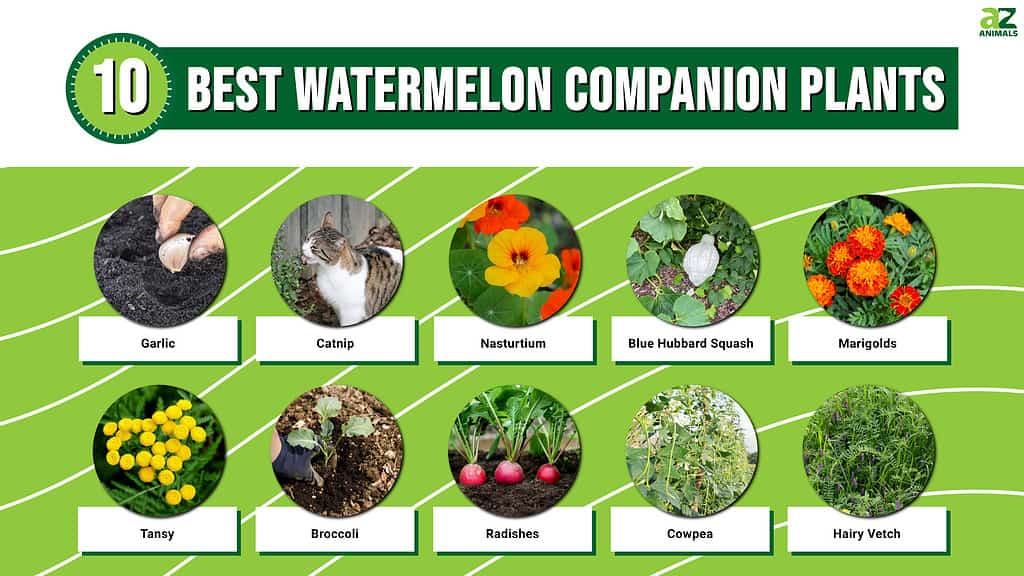
Standard watermelons are big fruits that require lots of growing space… as in, up to 24 square feet per plant. That may be intimidating to a backyard gardener; fortunately, cultivars with smaller fruit and a more manageable footprint are available. Whatever variety you choose to plant (watermelons can be grown from seed or seedlings), one important ingredient you’ll need is patience: The melons can take 80-100 days to mature. The fresh flavor of watermelon right out of the garden is well worth the wait, but you’ll need to take good care of your plants as they grow and ripen.
Companion Plants for your Watermelon Patch
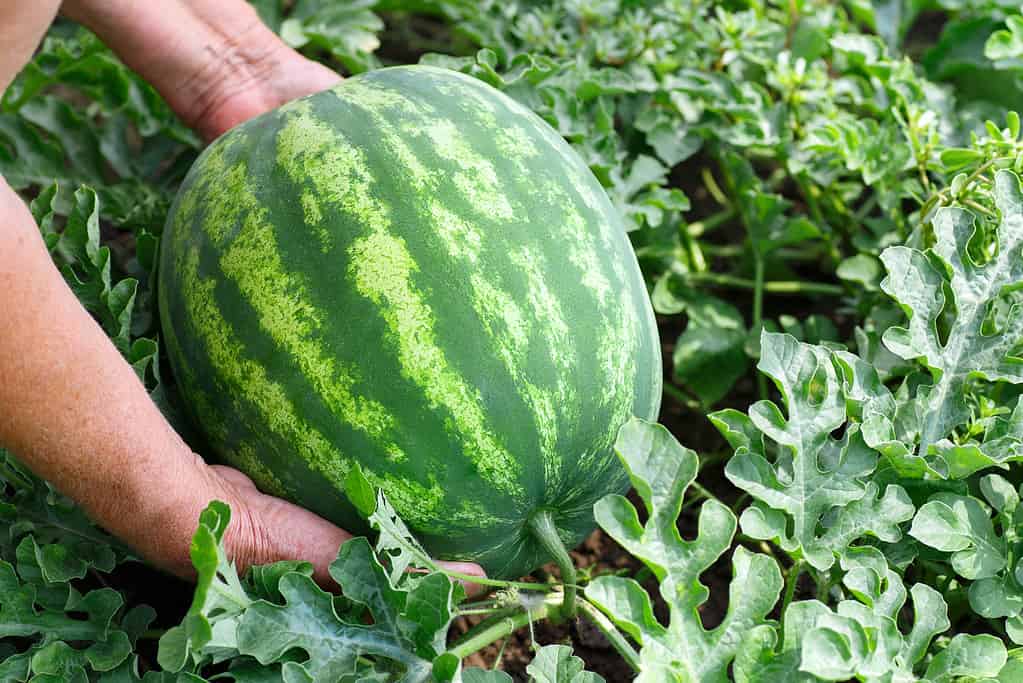
Protect your melon: grow some friendly watermelon companion crops nearby to help them get big and strong.
©Alter-ego/Shutterstock.com
One strategy to ensure your melon crop makes it to the harvest safely is to use companion planting. That means growing some other plants near your watermelon patch that will help the melons thrive. Companion plants are especially helpful for protecting your precious crops from predation. Because guess what? You’re not the only one who craves the taste of watermelon; there are plenty of garden pests who have the same idea. And they’re not even going to wait for the melons to ripen. So let’s consider some good options to defend your backyard crop from melon-munching mooches, like aphids and cucumber beetles. We’ll also suggest companion plants to attract helpful insects, and to improve the soil quality of your garden.
1. Garlic
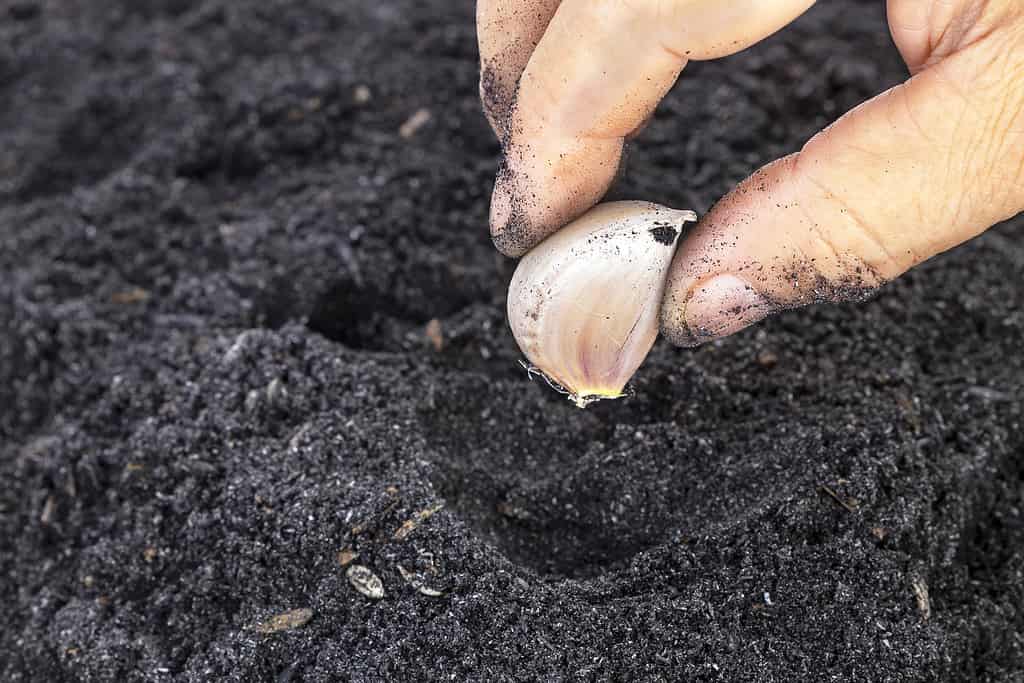
Garlic cloves planted in the fall will grow new plants by spring.
©supersaiyan3/Shutterstock.com
Maybe it’s just a coincidence, but aphids are kind of like vampires, draining plants of nutrient-rich liquids. So it’s kind of appropriate that garlic is among the best watermelon companion plants, helping keep aphids away. To grow garlic, plant cloves in the fall, mulch them to keep warm, and watch for the plants to emerge in the spring. It’s best to use cloves from a garden supplier, rather than supermarket garlic. Chives and onions are also good aphid-repulsers.
2. Catnip
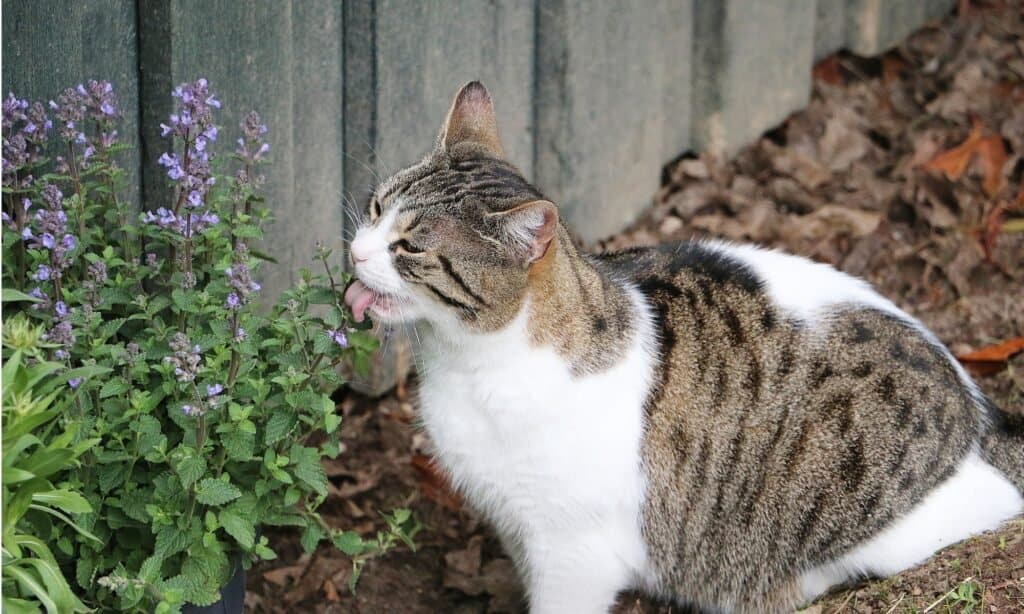
Cats love catnip, but aphids hate it.
©iStock.com/BiancaGrueneberg
As much as this mint family plant attracts cats, it repels aphids. The herb is easy to grow, as long as it gets a full six hours of sunlight. In fact, you might want to keep an eye on the plant and prune it back to keep it from overwhelming your garden space. Besides its appeal to cats, catnip can be used as a culinary spice and brewed as a medicinal tea. If you’re not trying to have neighborhood cats visiting your garden to get high, try planting mint.
3. Nasturtium
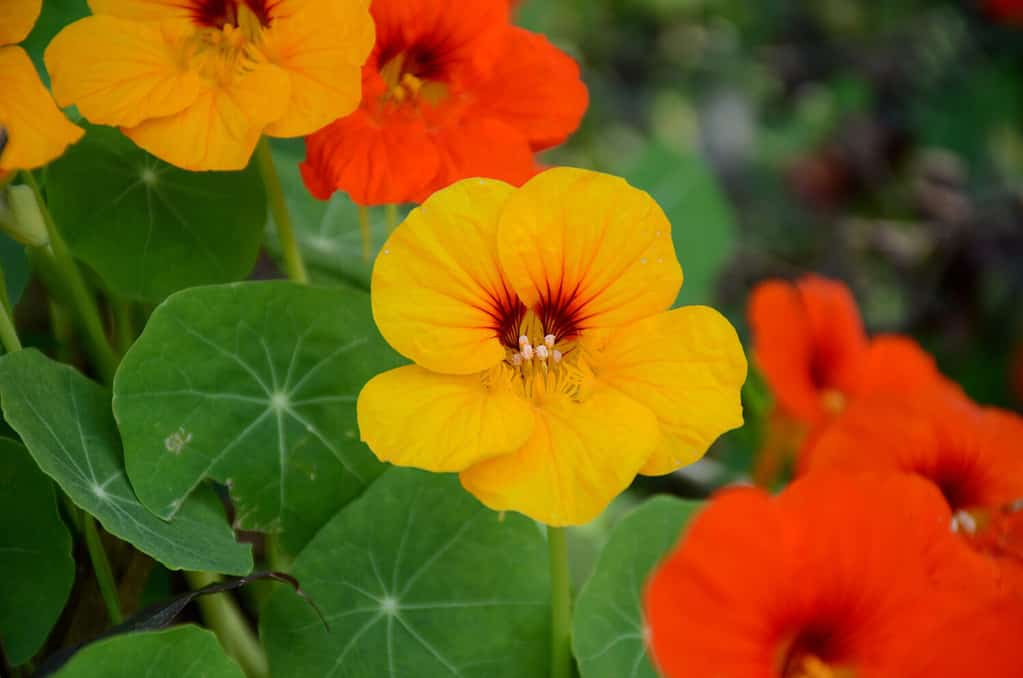
Delicate nasturtiums can protect your watermelons from pests.
©Amit kondal/Shutterstock.com
Grow these tough little flowers as watermelon companion plants on the edges of your garden to lure aphids away from your precious melons. Nasturtiums also repel cucumber beetles, which can munch on the leaves and stems of your watermelon plants and spread diseases.
4. Blue Hubbard Squash
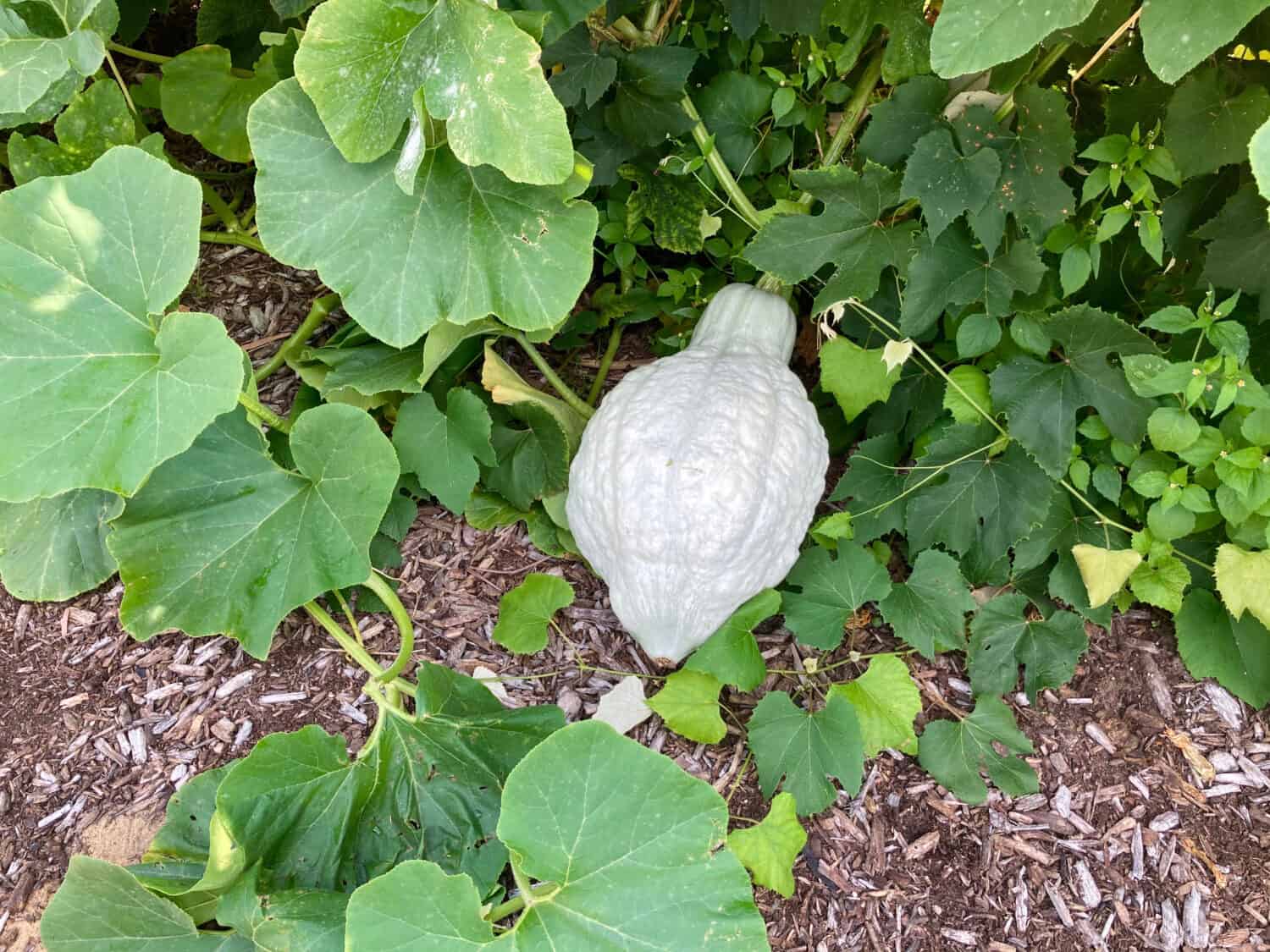
The blue hubbard squash is a good “trap crop” for watermelon growers.
©Juli V/Shutterstock.com
A favorite target of cucumber beetles, this squash can be used to lure them away from your watermelon, especially early in the growing season when the beetles can do the most damage. When using this strategy, you’ll want to inspect the “trap crop” regularly and knock any pests into a bucket of soapy water to keep them from moving to your watermelons.
5. Marigolds

Margolds with bring helpful insects into your garden.
©FunFamilyRu/Shutterstock.com
Besides adding some orange and yellow tones to your landscape, marigold flowers attract predatory insects that will happily feed on aphids and other garden pests. They also attract pollinators that you’ll need for your plants to bear fruit.
6. Tansy
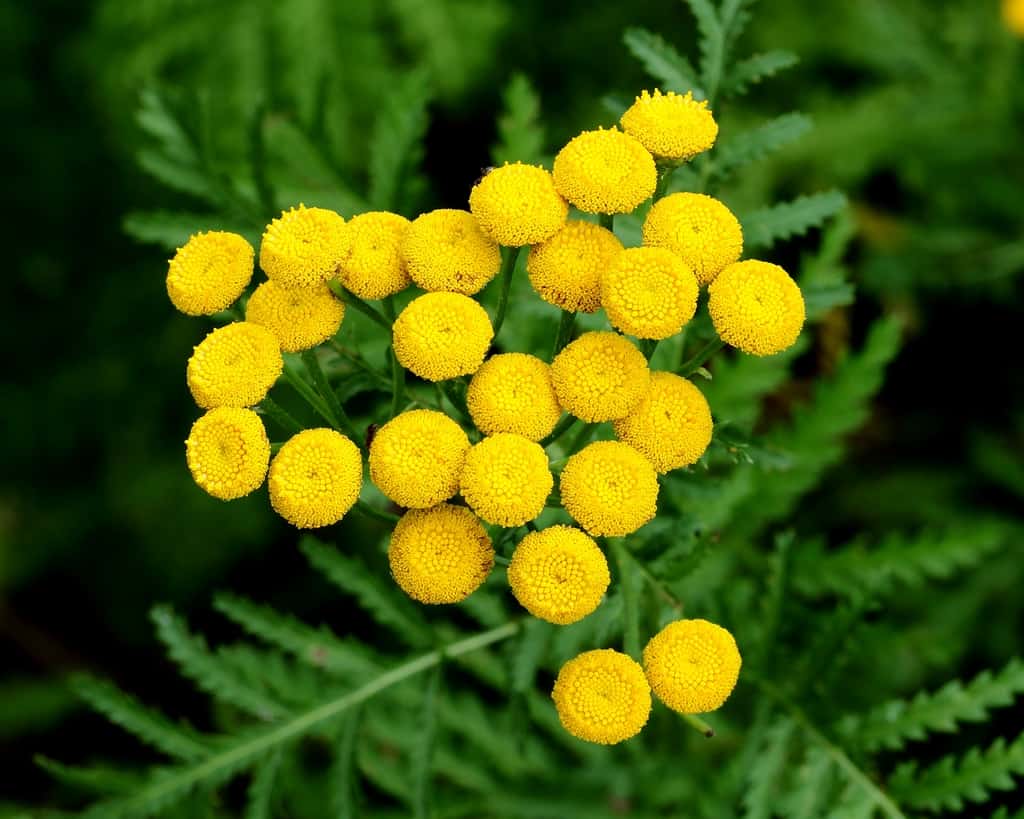
Tansy is a perennial herbaceous flowering plant that repels pests.
©Dominicus Johannes Bergsma / CC BY-SA 4.0, via Wikimedia Commons – License
Tansy is a perennial flower that attracts helpful pest-eating insects of all sorts. It is a great companion plant for watermelon as well as potatoes. Tansy is often planted with potatoes to reduce the potato beetle population from 60 to 100 percent. This colorful, useful plant is often placed on window sills to repel flies and tansy oil is used in an effective, all-natural mosquito repellant.
7. Broccoli
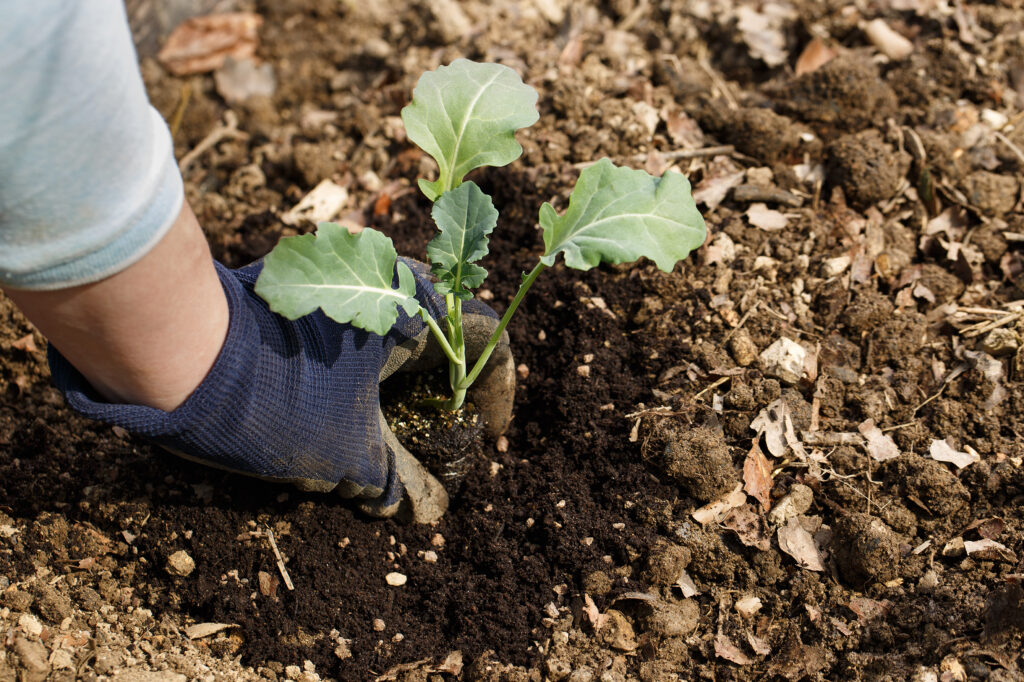
Broccoli is a perfect companion plant for watermelon.
©zlikovec/Shutterstock.com
Broccoli, grown near your watermelons, are said to keep cucumber beetles away.
8. Radishes

Radishes are great companion plants for watermelon.
©Natallia Ploskaya/Shutterstock.com
You can plant a thick row of radishes around your watermelon to serve as a barrier to keep pest insects at bay. The scent of radishes repels insects to keep them away from your watermelon crop.
9. Cowpea
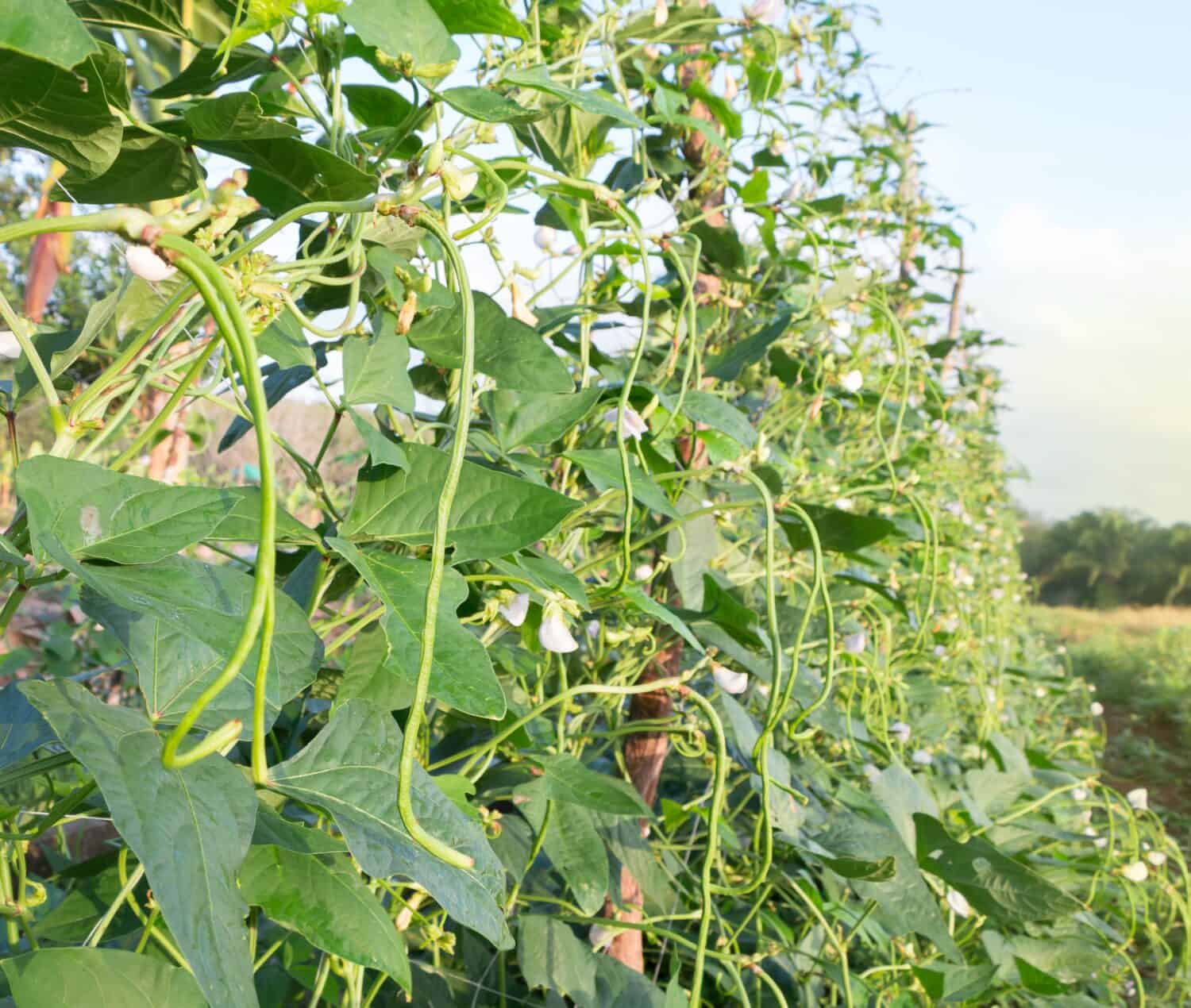
Tall cowpea plants provide tasty peas and helpful pollinating insects.
©Melada photo/Shutterstock.com
This favorite Southern plant loves full sun and does well in high heat and humidity. Eating cowpeas, also called black-eyed peas, on New Year’s Day is said to bring good fortune. The plant grows on trellises, adding vertical interest to your landscape, and its lavender flowers look great even if you’re not interested in eating the peas. Cowpeas will bring pollinators to your watermelon patch, as well as predatory insects for pest control.
10. Hairy Vetch
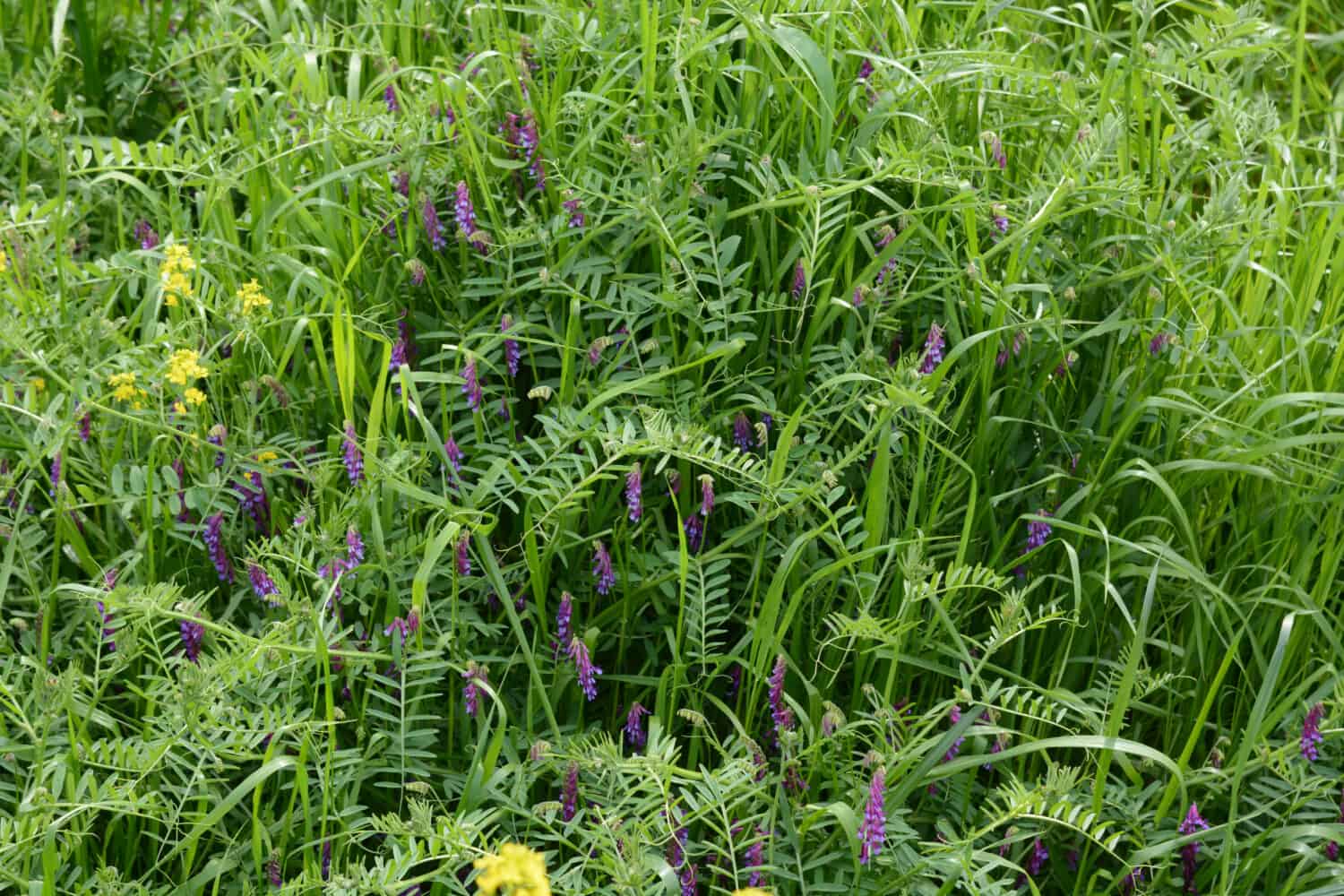
Count on a cover crop to protect and nourish your garden soil when growing season’s over.
©tamu1500/Shutterstock.com
This annual legume can be used as a cover crop for your watermelon garden. That means you plant it in the fall and let it grow over the winter, when it will protect the soil from erosion and add organic matter and nutrients to the soil. Vetch in particular will improve the soil’s nitrogen content. In the spring, you’ll mow or cut the plant down and let the residue act as a mulch, suppressing weeds and diminishing pathogens that could trouble your melon plants.
The photo featured at the top of this post is © iStock.com/panida wijitpanya
Thank you for reading! Have some feedback for us? Contact the AZ Animals editorial team.






